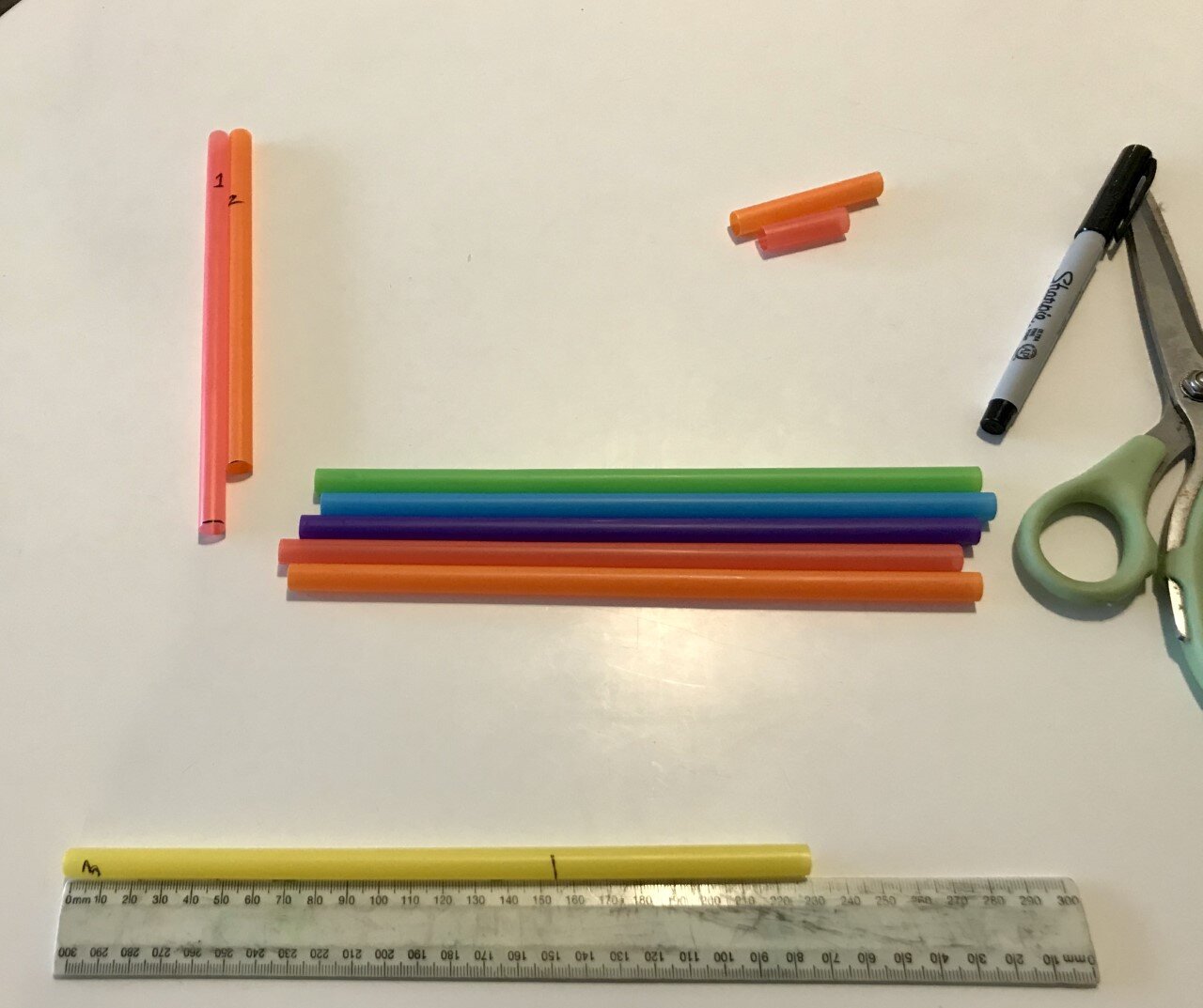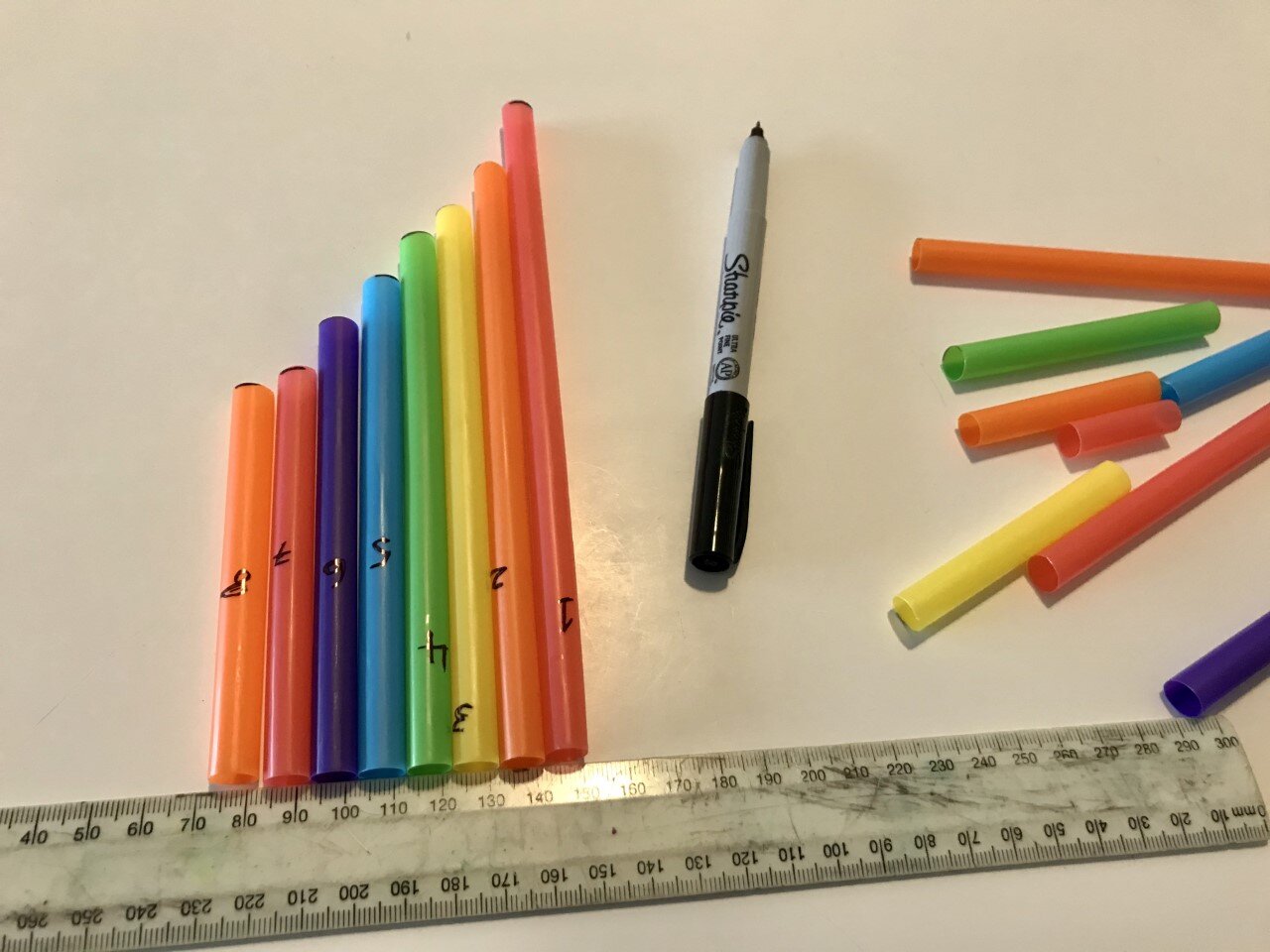Straw Pan Pipes
There is science in music! Create a musical instrument with some simple household items and learn about sounds, vibrations, and pitch.
What You Need:
Ruler
Scissors
Straws
Markers
Tape
Preparation:
Measure and cut the straws so that you have one straw in each of the following lengths:
Measure and cut the straws.
Straw # 1: 19.5 cm (most straws are this length, but it is best to measure to be sure!)
Straw # 2: 17 cm
Straw # 3: 15.5 cm
Straw # 4: 14.5 cm
Straw # 5: 13 cm
Straw # 6: 11.5 cm
Straw # 7: 10 cm
Straw # 8: 9.5 cm
· Straw # 1: 19.5 cm
Straw # 2: 17 cm
Straw # 3: 15.5 cm
Straw # 4: 14.5 cm
Straw # 5: 13 cm
Straw # 6: 11.5 cm
Straw # 7: 10 cm
Straw # 8: 9.5 cm
Save the ends that you cut off to use for spacers when you build you pan pipes.
What you do:
Arrange all the straws in order, longest to shortest, with the tops of them all at the same level.
Arrange all the straws in order, longest to shortest, with the tops of them all at the same level.
Number the straws with a maker 1 through 8, with number 1 being the longest straw.
Place the spacers in between the numbered straws, this will make it easier for you to blow into one straw at a time for different individual notes.
Tape the straws spacers tightly together in a long row.
Test your pan pipes by blowing the numbered straws in this order:
333 333 35123 444 4433 3355421
Can you recognize the song?
Explanation:
What is sound?
Sound is a series of waves that travel through the air and are interpreted by our ears and brain.
Why do we hear sound when we blow into this flute?
The pan flute is an end-blown flute. Sound is produced by the vibration of an air stream blowing across an open hole at the end of the tube. The air moves through the straw, vibrating along the way and out to the end.
Why do we hear different sounds?
This is what we call pitch. The pitch of a music note is determined by its sound wavelength. Each straw is producing a music note of different pitch in a musical scale called an octave. The wavelength that can be played depends on the length of the instrument.
Take it Further:
What are other instruments that use air to create sound? Investigate other instruments where the musician blows into them to make a sound. Do they work in the same way? Organs, woodwinds and brass instruments all have similar principles.
Investigate the history of panpipes. Throughout history, many cultures had enjoyed the music from panpipes. What stories can you find about these interesting instruments.
Loving this content? Make a donation to the Saskatchewan Science Centre!
#letssciencethis #SaskScienceCentre #AtHomeWithCASC #ScienceChampions #ScienceAtHome #realsciencerealfun













